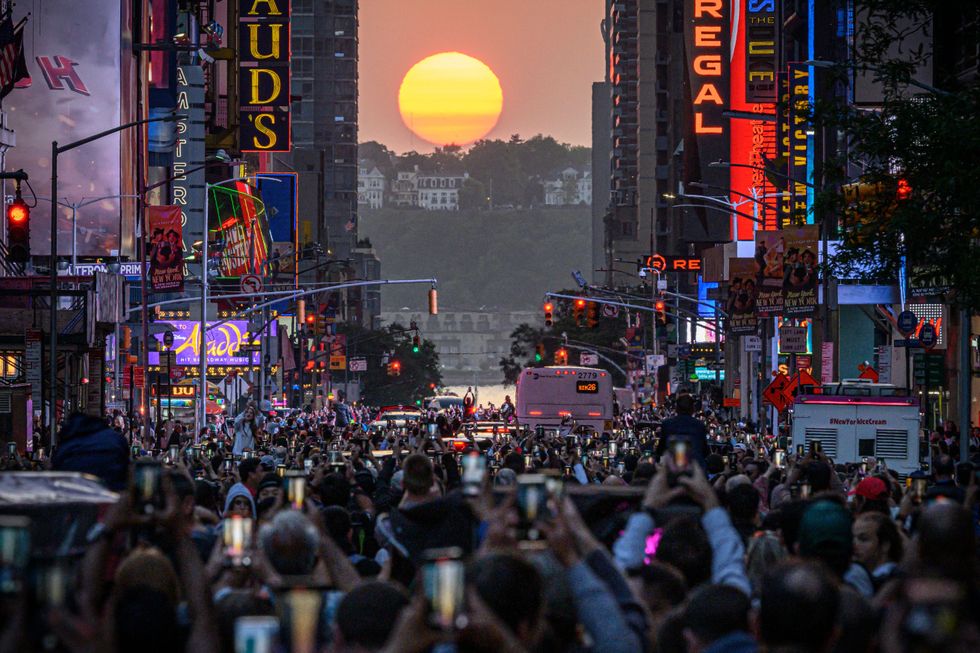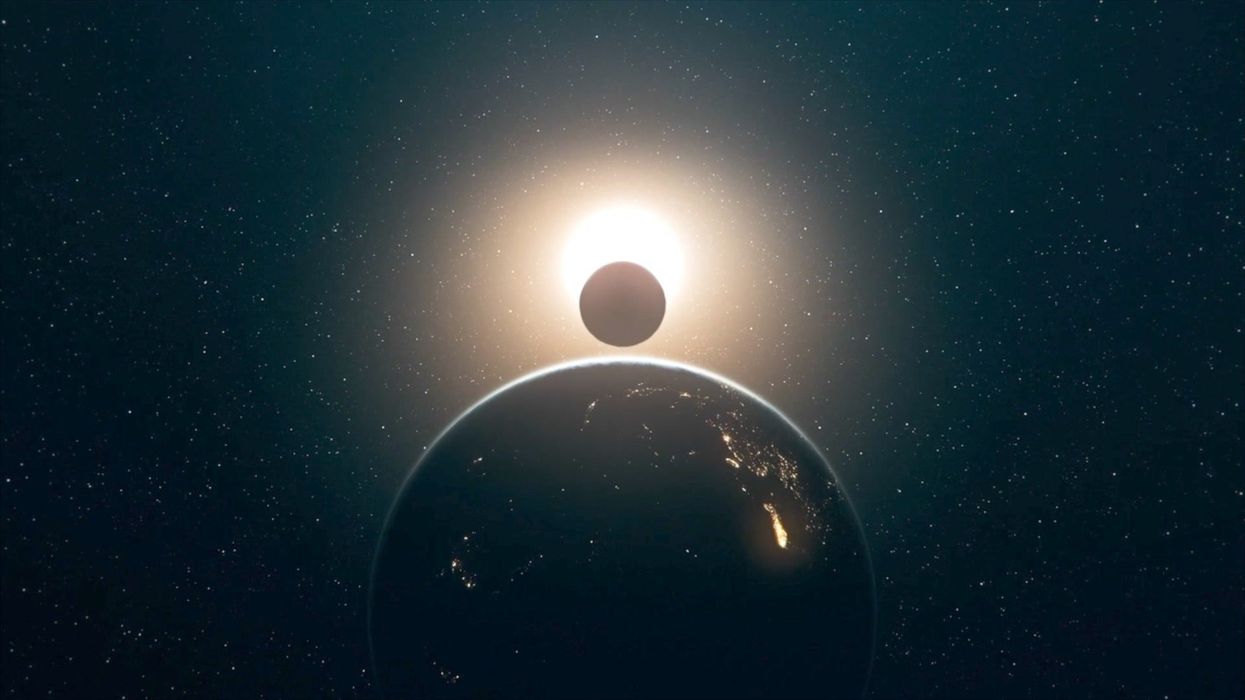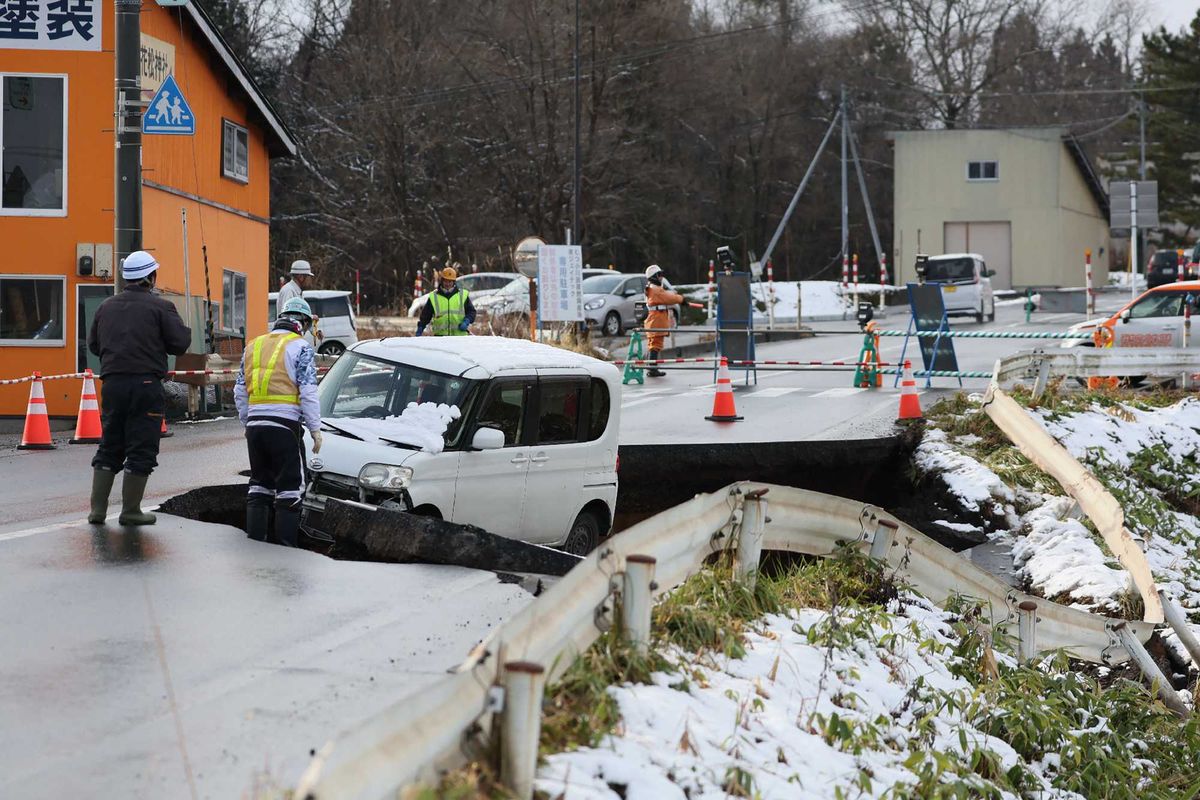Twice a year, New Yorkers are treated to a spectacular visual phenomenon.
The event, known as Manhattanhenge, has understandably become a favourite among photographers, as New Yorkers take to the sidewalks to watch this unique spectacle occur as the weather heats up.
What is Manhattanghnge?
Manhattanhenge does not take place on the summer solstice, instead it happens around three weeks before and after the solstice. This is when the sun perfectly aligns with Manhattan’s east-west streets.
When the setting sun aligns perfectly with the east–west streets of the Manhattan street grid it creates a stunning visual effect as sunlight streams through the spaces in between the buildings, lighting the streets in a glowing orange or red.
How did Manhattanhenge get its name?
The term Manhattanhenge was coined in 1997 by astrophysicist and native New Yorker Neil deGrasse Tyson. In an interview with Natural History magazine, Tyson explained that the name was inspired by Stonehenge, the prehistoric monument known for its solar alignments.
Travellers from across the world flock to the prehistoric megalithic structure on Salisbury Plain in Wiltshire to view the sunset and sunrise as the light tunnels through the gaps between the stones. It was built to align with the sun on the solstices, according to English Heritage, however Manhattanhenge is coincidental. In other words, the streets of Manhattan were not constructed to ensure the sun would be seen setting from this spectacular perspective.

When is Manhattanhenge 2025?
The dates shift slightly each year. Remember, it does not take place on the summer solstice itself, which is June 20 this year, but it occurs slightly before it happens (roughly three weeks) and slightly after.
The first Manhattanhenge of the year will occur on Wednesday, May 28 at 8:13 p.m. with a slight variation happening the following day, May 29, at 8:12 p.m.
If you’re out of town, fear not. Manhattanhenge will return on July 11 and 12.
Half of the sun will be above the horizon and the other half below it on May 28 and July 12, according to the Hayden Planetarium.
Meanwhile, the whole sun will appear to hover between Manhattan’s buildings on May 29 and July 11.
Where to view Manhattanhenge?
Popular spots include: 14th Street, 23rd Street, 34th Street, 42nd Street, and 57th Street.
It’s important to note that you cannot see Manhattanhenge if the weather is cloudy or rainy; it’s most visible during clear skies as clouds will block the sun and prevent the you from seeing the phenomenon unfold.
Unfortunately, rain is predicted to fall in Manhattan this week. However, there will be another chance to see Manhattanhenge in July.
Why not read
Skygazers catch glimpse of partial solar eclipse
UFO 'spotted' during solar eclipse causes social media meltdown
How to join the indy100's free WhatsApp channel
Sign up to our free indy100 weekly newsletter
Have your say in our news democracy. Click the upvote icon at the top of the page to help raise this article through the indy100 rankings.














Donald Trump explodes at 'obnoxious' reporter